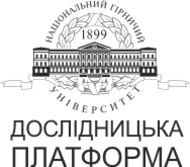№80-19
Selection of rational parameters of working elements with an equidistant profile of single-screw hydraulic machines for mining equipment
A. Khrutskyi1, V. Hromadskyi1, O. Kryvenko1,V. Hromadskyi1, O. Lifentsov1
1Kryvyi Rih National University, Kryvyi Rih, Ukraine
Coll.res.pap.nat.min.univ. 2025, 80:190–198
Full text (PDF)
https://doi.org/10.33271/crpnmu/80.190
ABSTRACT
Purpose. The study is aimed at analyzing the influence of geometric parameters of single-screw pumps with a 3:4 ratio, specifically the length of the screw and the diameter of the generating circle, on the working volume of the pump and the length of the contact line between the rotor and stator, with the goal of reducing energy consumption and improving its operational characteristics.
The methods. The research was conducted through computer modeling of the pump's working cavities. The ranges of screw pitch values (150–450 mm) and the diameter of the generating circle (8–20 mm) were determined based on the analysis of industrial pump nomenclature series. Analytical and numerical methods were used to establish mathematical dependencies between the studied parameters, as well as a summation method to solve the multi-criteria optimization problem.
Findings. An analysis of the interrelationships between the geometric characteristics of the screw pair and the operational indicators of the pump was carried out. Mathematical models describing the dependencies of the working volume and the length of the contact line on the parameters of the rotor-stator pair were developed. The optimization takes into account the maximization of the working volume and the minimization of the contact line length to reduce friction and improve the pump’s efficiency.
The originality. A quadratic dependence of the pump's working volume on the screw length and the diameter of the generating circle was established. A linear dependence of the total contact line length between the rotor and stator on these same geometric characteristics was found. Optimal geometric parameters ensuring a balance between pump productivity and reduced friction were determined.
Practical implementation. The developed mathematical dependencies can be used in the design of optimal single-screw pump structures, particularly in the mining industry, to improve the efficiency and longevity of pumping equipment.
Keywords: hydraulic drive, hydraulic machines, single-screw pumps, working volume, contact line, equidistant profile, hypo-epi-cycloid, multi-criteria optimization.
References
1. Canessa, E., Baruzzo, M., & Fonda, C. (2017). Study of Moineau-based pumps for the volumetric extrusion of pellets. Additive Manufacturing, 17, 143–150. https://doi.org/10.1016/j.addma.2017.08.015
2. Yang, H. X., Zhang, S. Y., Jia, X. K., Hao, X. D., & Wu, M. (2013). Test of Coal Slime Pumping by Single-Screw Pump. Advanced Materials Research, 712–715, 1380–1385. https://doi.org/10.4028/www.scientific.net/amr.712-715.1380
3. Wu, J. F., Lan, J. B., Meng, F. G., Zhang, X. P., & Yu, Y. (2013). Simulation Study for the Effects of Rotational Speed on Performance of Full Metal Single Screw Pump. Key Engineering Materials, 561, 384–389. https://doi.org/10.4028/www.scientific.net/kem.561.384
4. Yu, B. L., Wu, J. F., & Yu, Y. (2013). Theory Research on Full Metal Single Screw Pump. Applied Mechanics and Materials, 345, 233–237. https://doi.org/10.4028/www.scientific.net/amm.345.233
5. Fujimoto, Y., & Horie, M. (2017). Study on Stator Stage of Single Screw Pump with Narrow Gap. The Proceedings of Mechanical Engineering Congress, Japan, 2017(0), J0550104. https://doi.org/10.1299/jsmemecj.2017.j0550104
6. Wu, J. F., & Gao, W. (2011). The Finite Element Analysis of Two Line Types of Three-Thread Single-Screw Pump. Advanced Materials Research, 204–210, 1175–1179. https://doi.org/10.4028/www.scientific.net/amr.204-210.1175
7. Zhang, H., Wu, X., & An, Y. (2020). Analysis of Leakage Model of All-Metal Screw Pump. Mathematical Problems in Engineering, 2020, 1–8. https://doi.org/10.1155/2020/7204859
8. Aage, N., Donaldson, J., Feng, Y., Gennip, Y., Grann, H., Gravesen, J., Hlod, A., Jensen, T.S., Larsen, A.A., Malakpoor, K., Markvorsen, S., Moreno, D., Malakpoor, K., Markvorsen, S., Moreno, D., Panhuis, P., & Panhuis, J. (6 November 2006). Mathematical problems for Moineau pumps. Engineering, Mathematics.
9. Gravesen, J. (2008). The geometry of the Moineau pump. Computer Aided Geometric Design, (25), 792–800.
10. Linchevskyi, Ye.A., Kutsenko, L.M., Kalynovskyi, A.Ya., Semkiv, V.O., Nazarenko, S.Yu., & Sukharkova, O.I. (2022). Heometrychne modeliuvannia epihipotrokhoidnykh profiliv odnohvyntovykh nasosiv Muano. Scientific Journal Problems of Emergency Situations, 2(36), 195–218. https://doi.org/10.52363/2524-0226-2022-36-16
11. Rosokha, S.V., & Kutsenko, L.M. (2007). Heometrychne modeliuvannia ob’iemiv robochykh kamer rotorno-planetarnykh trokhoidnykh mashyn: monohrafiia. UTsZU.
12. Baroiu, N., Costin, G. A., Frumușanu, G. R., Teodor, V. G., & Oancea, N. (2021). Study of the stator geometry for a Moineau pump. IOP Conference Series: Materials Science and Engineering, 1009(1), 012003. https://doi.org/10.1088/1757-899x/1009/1/012003




